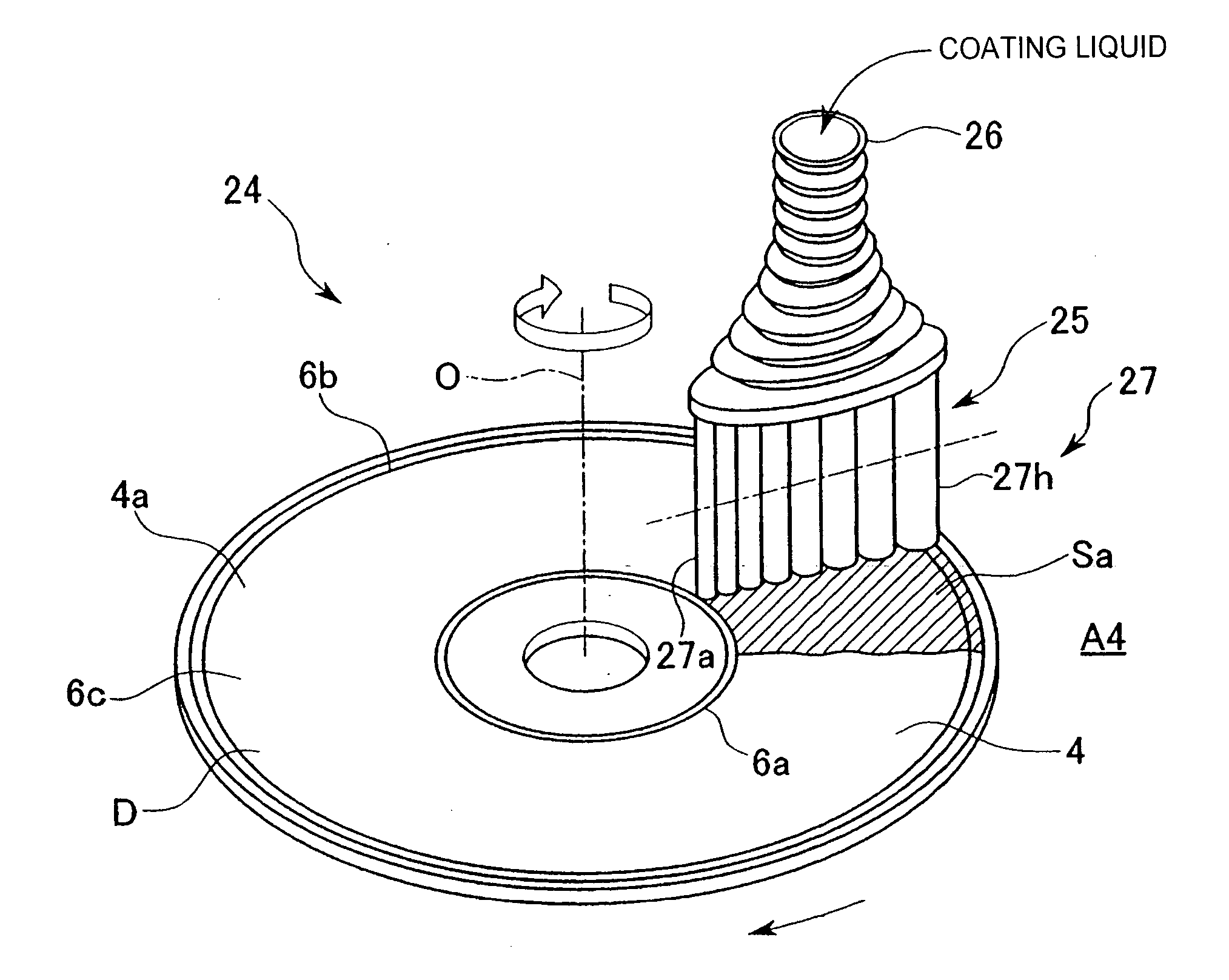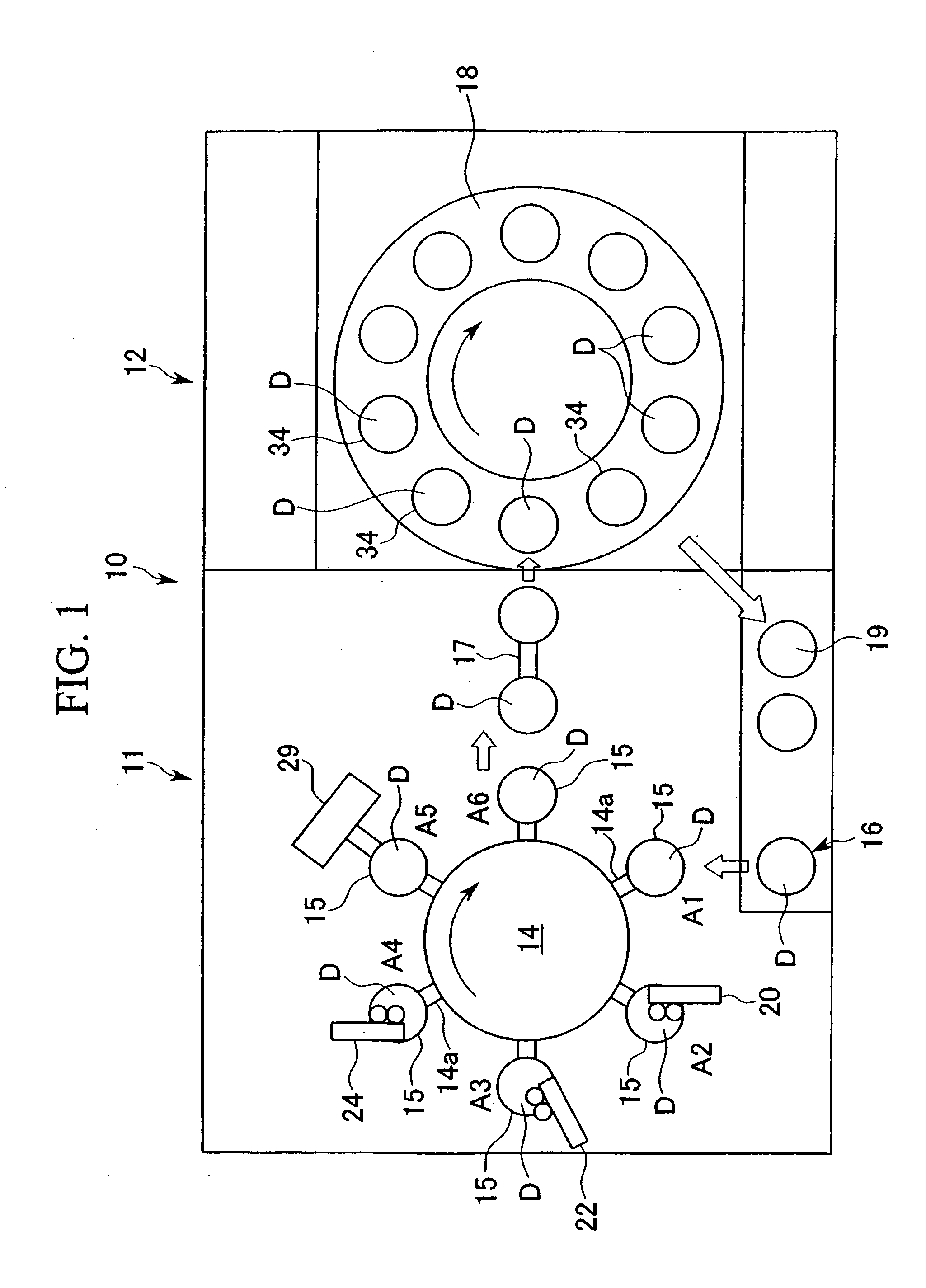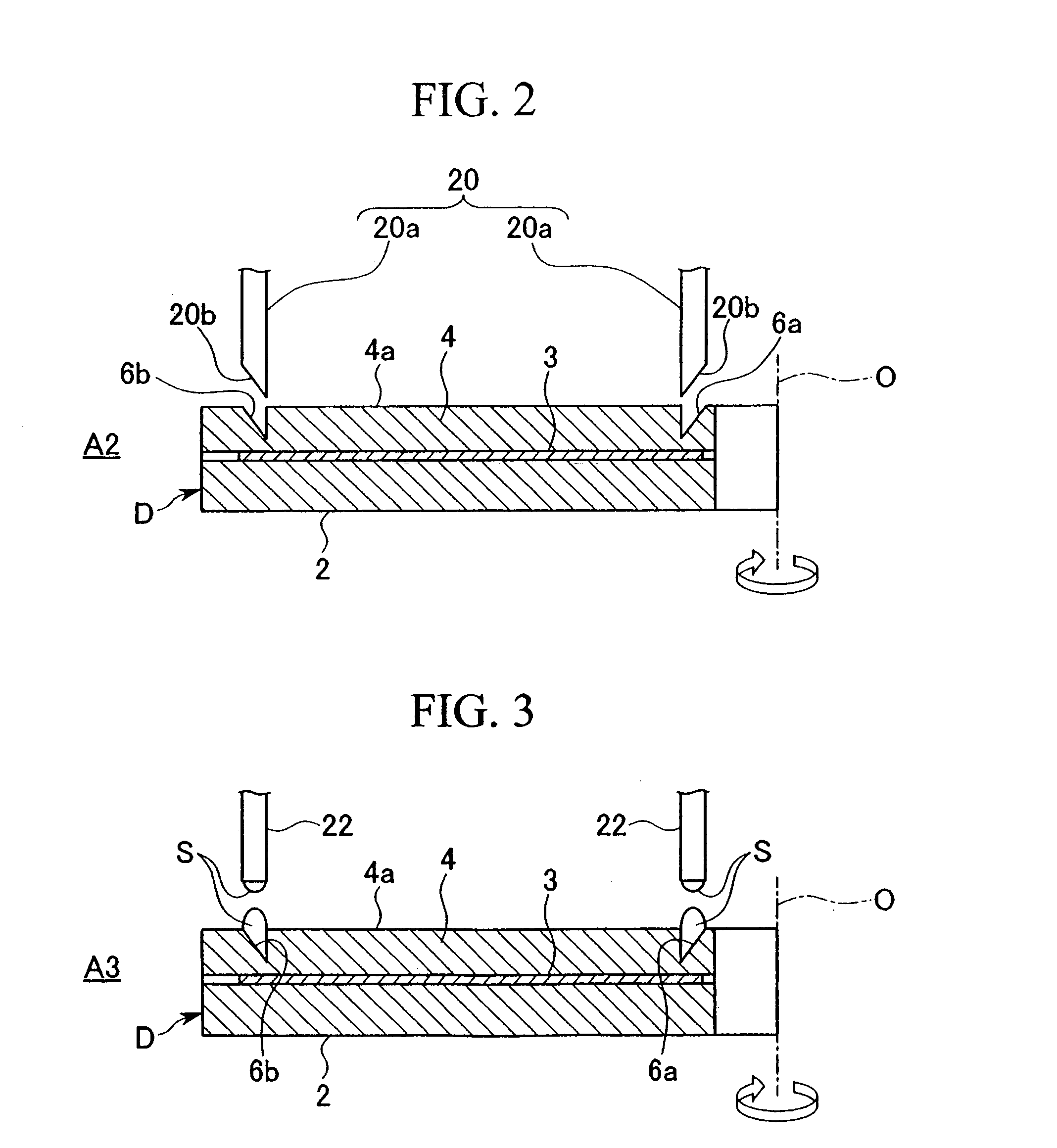Ink jet-use receptive layer forming method and device, and disk formed with ink jet-use receptive layer
a technology of ink jet and receiving layer, which is applied in the field of ink jet use receptive layer forming method and device, and disk formed with ink jet use receptive layer, can solve the problems of unsatisfactory ink receiving capability of receiving layer formed from uv curable resin, prone to bleeding, and high cost of offset printing process for printing labels on this type of low-volume cd run, so as to improve the effect of preventing wrinkling or crack
- Summary
- Abstract
- Description
- Claims
- Application Information
AI Technical Summary
Benefits of technology
Problems solved by technology
Method used
Image
Examples
modified examples
[0140] As follows is a description of modified examples of the process and apparatus 10 for forming a receiving layer according to the example described above. Those members or components that are either identical or similar to components within the example described above are described using the same reference symbols.
[0141] Modified examples of the concave grooves 6a and 6b are described with reference to FIG. 14 through FIG. 16.
[0142]FIG. 14 is a partial longitudinal cross-sectional view showing a concave groove 47 (47a and 47b) according to a first modified example. In the figure, the concave groove 47 is formed with a substantially square-shaped cross section, and this type of concave groove is formed around the entire inner peripheral boundary portion 5a and the entire outer peripheral boundary portion 5b of the annular-shaped receiving layer 5. The concave groove 47 is formed with a depth d across the entire width W, meaning that provided the depth d is set to a value that ...
PUM
| Property | Measurement | Unit |
|---|---|---|
| Fraction | aaaaa | aaaaa |
| Temperature | aaaaa | aaaaa |
| Thickness | aaaaa | aaaaa |
Abstract
Description
Claims
Application Information
 Login to View More
Login to View More - R&D
- Intellectual Property
- Life Sciences
- Materials
- Tech Scout
- Unparalleled Data Quality
- Higher Quality Content
- 60% Fewer Hallucinations
Browse by: Latest US Patents, China's latest patents, Technical Efficacy Thesaurus, Application Domain, Technology Topic, Popular Technical Reports.
© 2025 PatSnap. All rights reserved.Legal|Privacy policy|Modern Slavery Act Transparency Statement|Sitemap|About US| Contact US: help@patsnap.com



